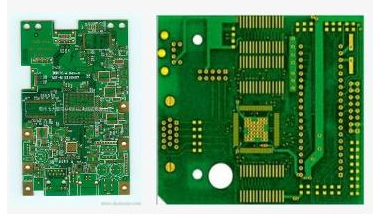After a PCB circuit board has completed the layout and routing, and completed the connectivity and spacing inspection, there is another very important step-post-inspection.
However, many beginners, including some experienced engineers, tend to overlook this step of later inspection due to various reasons. This leads to some basic bugs, such as insufficient line width, component label silk-printing on vias, sockets too close, signal loops, etc. As a result, electrical problems or process problems are caused, and the board must be re-printed in serious cases, resulting in waste.
Therefore, after a PCB has completed the layout and routing, don't forget that there is another very important step-post-inspection. What details are included in the later inspection? Let me introduce you one by one.

1. Layout
(1) IC should not be close to the edge of the board.
(2) The components of the same module circuit should be placed close to each other. For example, the decoupling capacitor should be close to the power supply pin of the IC, and the components that make up the same functional circuit should be placed in one area with a clear hierarchy to ensure the realization of the function.
(3) Arrange the position of the socket according to the actual installation. Sockets are all lead to other modules. According to the actual structure, in order to facilitate installation, the principle of proximity is generally adopted to arrange the position of the socket, and it is generally close to the edge of the board.
(4) Pay attention to the direction of the socket. The sockets are oriented, and if the direction is reversed, the wire must be re-customized. For flat sockets, the direction of the socket should be toward the outside of the board.
(5) There can be no devices in the Keep Out area.
(6) The source of interference should be far away from sensitive circuits. High-speed signals, high-speed clocks, or high-current switching signals are all interference sources and should be kept away from sensitive circuits, such as reset circuits and analog circuits. They can be separated by paving.
2. Wiring
(1) The size of the line width. The line width should be selected in combination with the process and the current carrying capacity, and the minimum line width cannot be less than the minimum line width of the PCB manufacturer. At the same time, the current carrying capacity is ensured, and the appropriate line width is generally selected at 1mm/A.
(2) Differential signal line. For differential cables such as USB and Ethernet, please note that the cables should be of equal length, parallel, and in the same plane, and the spacing is determined by the impedance.
(3) Pay attention to the return path of the high-speed line. High-speed lines are prone to electromagnetic radiation. If the area formed by the routing path and the return path is too large, a single-turn coil will radiate electromagnetic interference outward. Therefore, when wiring, pay attention to the return path next to it. The multi-layer board is provided with a power layer and a ground plane to effectively solve this problem.
(4) Pay attention to the analog signal line. The analog signal line should be separated from the digital signal, and the wiring should be avoided to pass by interference sources (such as clock, DC-DC power supply), and the wiring should be as short as possible.
3. Component packaging
(1) Pad pitch. If it is a new device, draw the component package yourself to ensure that the spacing is appropriate. The pad spacing directly affects the soldering of the components.
(2) Via size (if any). For plug-in devices, the size of the vias should be left with sufficient margin, generally not less than 0.2mm is more appropriate.
(3) Contour silk screen. The outline silk screen of the device should be larger than the actual size to ensure that the device can be installed smoothly.
4. EMC and signal integrity
(1) Termination resistance. High-speed lines or digital signal lines with higher frequencies and longer traces are best to have a matching resistor in series at the end.
(2) The input signal line is connected in parallel with a small capacitor. The signal line input from the interface should be connected to a small picofarad capacitor near the interface. The size of the capacitor is determined according to the strength and frequency of the signal, and cannot be too large, otherwise it will affect the signal integrity. For low-speed input signals, such as key input, a small capacitor of 330pF can be used.
(3) Driving ability. For example, a switching signal with a large driving current can be driven by a transistor; for a bus with a large fan-out number, a buffer (such as 74LS224) can be used for driving.
5. Silk screen
(1) Board name, time, PN code.
(2) Labeling. Mark the pins or key signals of some interfaces (such as arrays).
(3) Component label. The component labels should be placed in a suitable position, and dense component labels can be placed in groups. Be careful not to place it in the position of the via.
6. Other
Mark point. For PCB designs that require machine soldering, two to three Mark points need to be added.